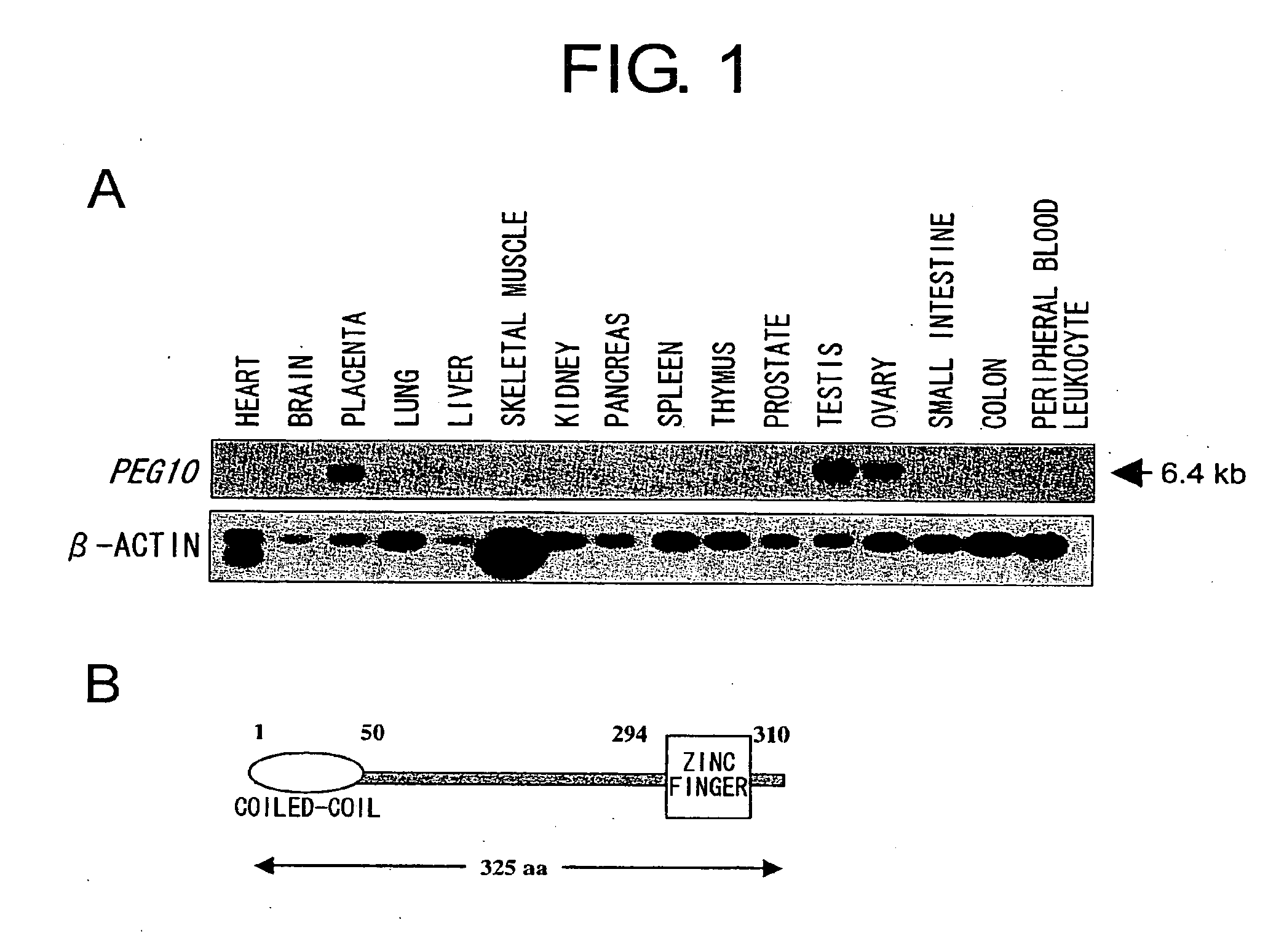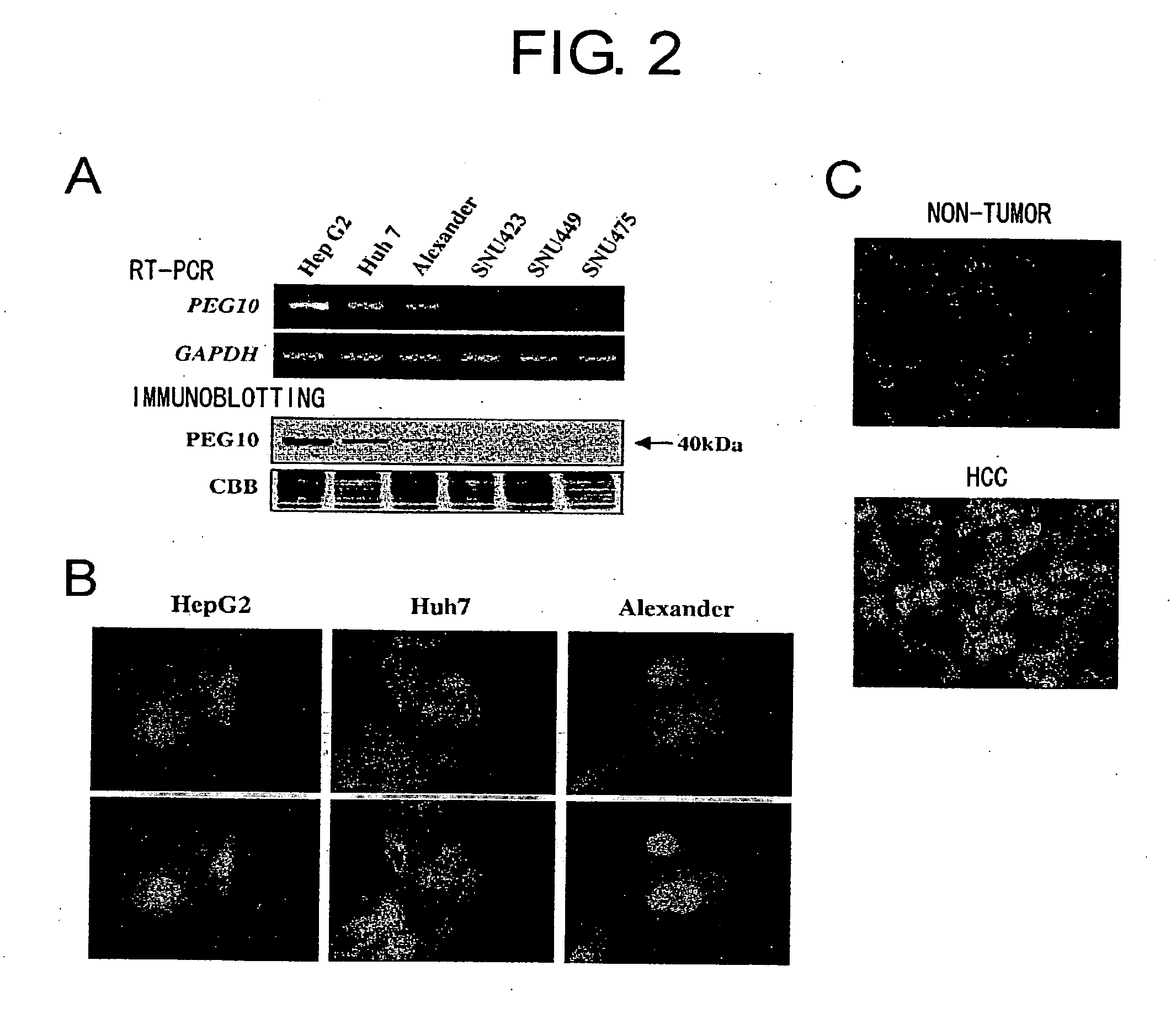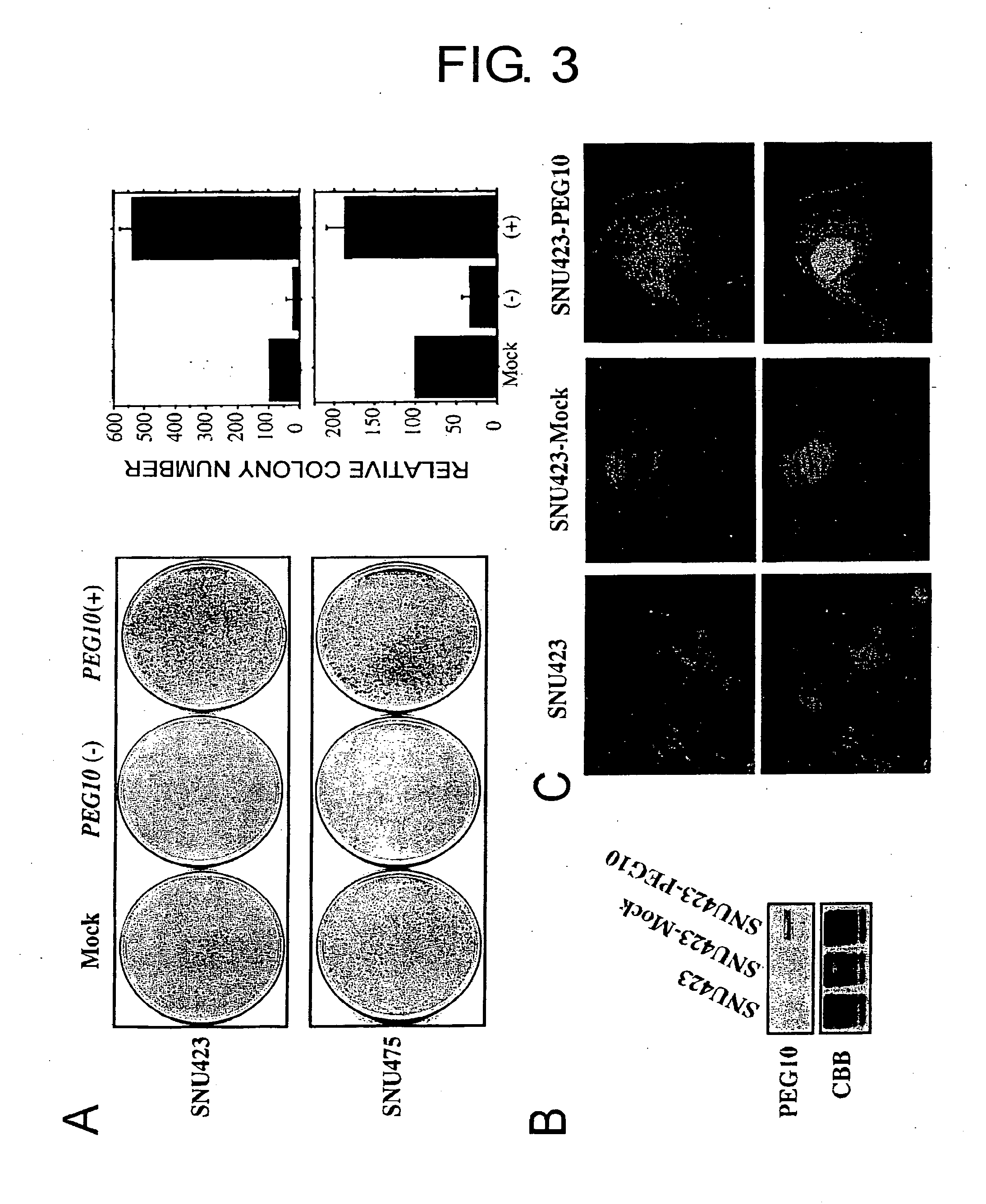Methods of regulating growth and death of cancer cells
a cell growth and cell technology, applied in the field of peg10, can solve the problems of protein actually causing malignant transformation or aberrant cell growth, poor prognosis for advanced hcc, and reduce the expression of siah1, improve the diagnostic value of hepatoma, and enhance the expression of peg10 gene expression
- Summary
- Abstract
- Description
- Claims
- Application Information
AI Technical Summary
Benefits of technology
Problems solved by technology
Method used
Image
Examples
example 1
[0084] Cell Lines and Tissue Samples
[0085] Human embryonic kidney 293 cells (HEK293) and human hepatoma cell lines HepG2, Huh7 and Alexander were obtained from the American Type Culture Collection (ATCC, Rockville, MD). SNU423, SNU449, and SNU475 were obtained from the Korea cell-line bank. All cell lines were grown in monolayers in appropriate media supplemented with 10% fetal bovine serum and 1% antibiotic / antimycotic solution (Sigma, St. Louis, Mo.), and maintained at 37° C. in air containing 5% CO2. All HCCs and corresponding non-cancerous liver tissues were obtained with informed consent from patients who had undergone hepatectomy.
example 2
[0086] Identification of a Novel Gene Frequently Up-Regulated in Hccs
[0087] Using a 23,040 gene, genome-wide cDNA microarray, the present inventors identified one commonly up-regulated EST from a total of 20 hepatitis B virus-positive or hepatitis C virus-positive HCCs (Okabe, H. et al., Cancer Res. 61, 2129-2137 (2001)). TaqMan PCR was used to confirm elevated expression of the gene (which corresponded to KIAA1051 (Hs. 137476)) in some tumors (data not shown). The relative expression ratios confirmed by TaqMan PCR showed a good correlation with those achieved using the cDNA micro array.
[0088] Multiple-tissue Northern blot analyses were carried out using cDNAs as probes. In these Northern blot analyses, human multiple-tissue blots (Clontech, Palo Alto, Calif.) were hybridized with a 32P-labeled PEG10 cDNA. Pre-hybridization, hybridization and washing were performed according to the supplier's recommendations. The blots were auto-radiographed with intensifying screens at −80° C. fo...
example 3
[0089] Expression of PEG10 in HCC Cell Lines and Primary HCCs
[0090] To investigate the role of PEG10 in HCCs, the present inventors generated a rabbit polyclonal antibody to the gene product. The polyclonal antibody to PEG10 was purified from the sera of immunized rabbits, using recombinant GST-PEG10 protein produced in E. coli.
[0091] Immunoblotting was carried out as follows: Cell extracts were prepared using lysis buffer (150 mM NaCl, 1% Triton X-100, 50 mM Tris-HCl (pH 7.4), and 1 mM DTT, with complete Protease Inhibitor Cocktail (Boehringer Mannheim, Mannheim, Germany). Proteins were separated using 10% SDS-PAGE and immunoblotted with the rabbit anti-PEG10 antibody. HRP-conjugated goat anti-rabbit IgG (Santa Cruz Biotechnology, Santa Cruz, Calif.) served as the secondary antibody, and signals were detected using the ECL Detection System (Amersham Pharmacia Biotech, Piscataway, N.J.).
[0092] Immunohistochemical staining was carried out as follows: Cultured cells on chamber slid...
PUM
| Property | Measurement | Unit |
|---|---|---|
| Cell death | aaaaa | aaaaa |
| Level | aaaaa | aaaaa |
| Interaction | aaaaa | aaaaa |
Abstract
Description
Claims
Application Information
 Login to View More
Login to View More - R&D
- Intellectual Property
- Life Sciences
- Materials
- Tech Scout
- Unparalleled Data Quality
- Higher Quality Content
- 60% Fewer Hallucinations
Browse by: Latest US Patents, China's latest patents, Technical Efficacy Thesaurus, Application Domain, Technology Topic, Popular Technical Reports.
© 2025 PatSnap. All rights reserved.Legal|Privacy policy|Modern Slavery Act Transparency Statement|Sitemap|About US| Contact US: help@patsnap.com



